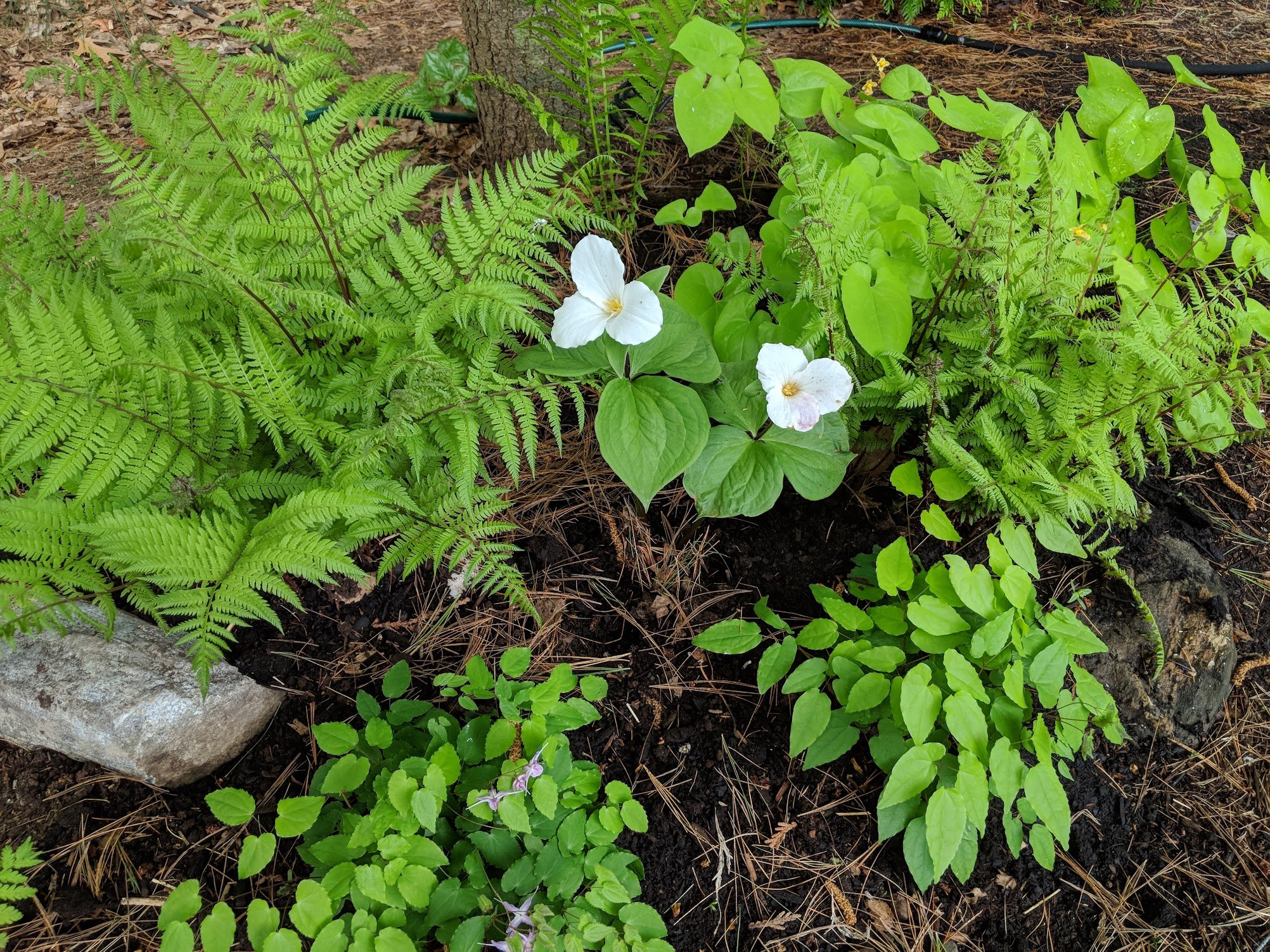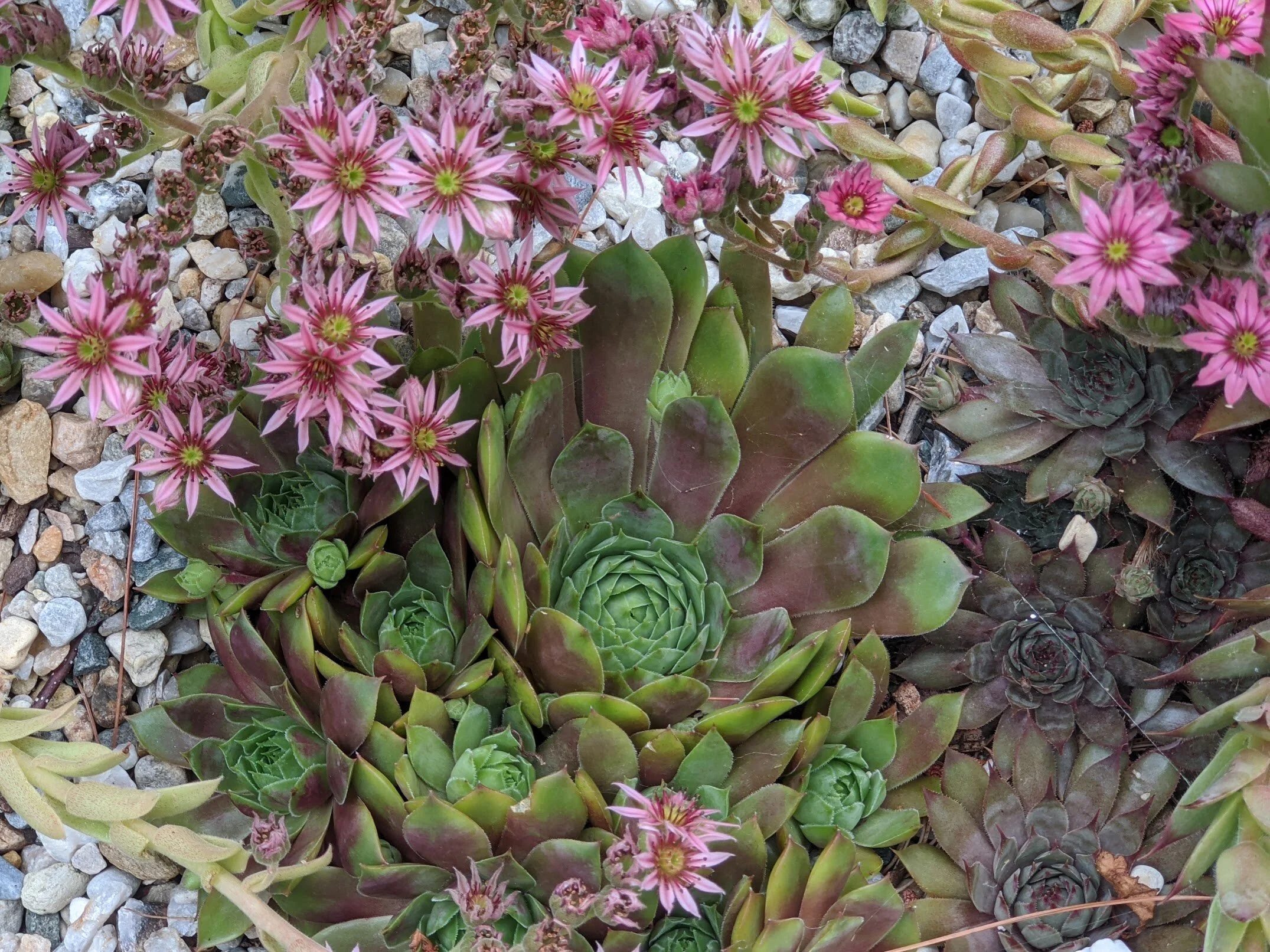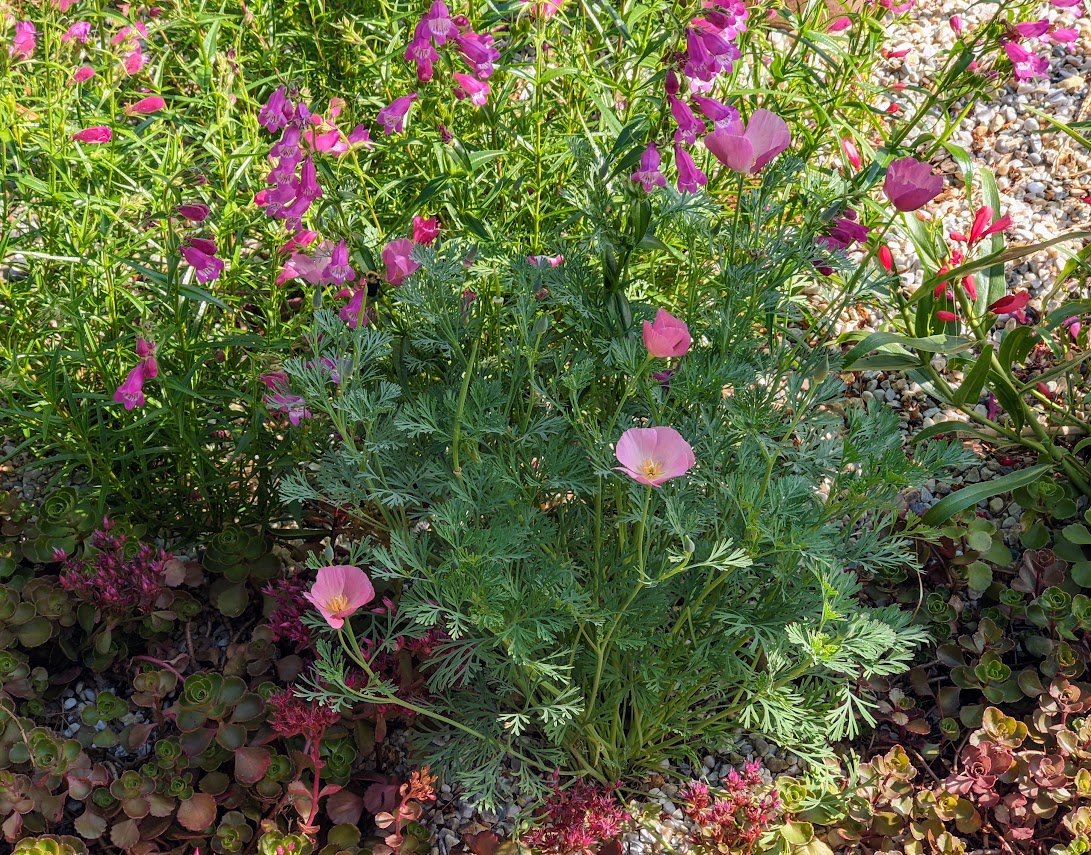The photo at top is one of my favorite images from all of my gardens. The dense carpet of groundcover is frequently observed and admired along the short walk from our patio to the gazebo. The variety of foliage color, texture and shape really appeals to me, especially as the plants transition to the adjacent moss garden. This collection of low groundcover plants is self-sustaining and requires almost no care throughout the year. It perfectly illustrates the use of plants as ‘green mulch’.
my favorite groundcovers for shade ~ no bark mulch needed!
When I originally planted this area under the canopy of birch, maple and white pine trees, I focused on shade loving, foliage-forward plants. I mulched with a blend of pine needles and leaves that had fallen from the trees above. It didn’t take long for all of the plants to spread and connect into a cohesive tapestry that looks beautiful from May until November. Now in spring, I typically only need to top dress any bare spots with a handful or two of my home made pine needle and leaf mulch.
The best groundcovers for shade:
Solomon’s Seal ~ no other plant garners as much interest from visitors. It’s lovely, arching habit and variegated foliage with dangling white bell flowers provides verticality and a framework for lower companion plants.
Heuchera/Coral Bells ~ These native cultivars are known for their continual production of fresh foliage all summer long. I prefer the purple foliage varieties that set off the deeper greens of companion plants. Delicate sprays of bloom appear in late summer.
Hakonechloa/Japanese forest grass ~ most varieties thrive in shade. I love the limey variegated cultivar ‘Albovariegata’, especially when planted with Lady’s Mantle!
Alchemilla mollis/Lady’s Mantle ~ known for beautifully fuzzy and ruffled leaves and lime green sprays of bloom, this plant thrives in shade. The leaves are captivating when they collect drops of morning dew. If leaves start to look a bit worn, simply cut them back to encourage a new flush of foliage.
Asarum/European ginger ~ glossy green leaves gradually spread, forming large colonies, suppressing weeds and entirely eliminating the need for any type of mulch. There is a native option, too, Asarum Canadense, that is lovely but the foliage is fuzzy, not glossy.
Ferns ~ in my mind, it’s impossible to have too many different types of native ferns. Their stature and delicacy complement the lower growing perennials. And ferns like ‘hay-scented’ fern cover a large, shady area in no time.
Cerato9stima plumbaginoidies/Plumbago ~ a truly stunning ground cover for late summer and into fall. It can be a bit slow to emerge in the spring and is prone to rabbit grazing. So, a dose of Liquid Fence or Rabbit Scram or other essential oil-based repellant is advised. When in bloom, the clear blue flowers are so delicate, you may drop to your knees just to get a closer look. The fall foliage lends a technicolor carpet to the garden.
ground covers for walkways and patios
Hard stone surfaces always look better when softened with plant material. The paved path to our front door traveles between a full shade garden on the left and a full sun garden on the right. The shady side is engulfed with European ginger, sweet woodruff, hellebores and sedum that all mix and mingle to create a lush carpet under the viburnum, dwarf white pine and petite Japanese maple. I love how they all take turns blooming from April until September. The sunny side is completely covered by a variety of sedum interplanted with delicate penstemon and California poppies in the gravel garden
the best groundcovers for sun:
In my sunny garden beds, most of the space is occupied by perennials that grow ‘shoulder to shoulder’. The ground covers are focused around rock walls and paths where they soften boulders and flagstone pavers:
Cranesbill/hardy geranium ~ with hundreds of species available, I prefer ‘Rozanne’. A sterile cultivar, ‘Rozanne’ blooms profusely from about June through October and is an important late source of nectar for native bees.
Campanula/bellflower ~ while not as long blooming as the cranesbill, this is a lovely groundcover with delicate, tidy foliage. Try ‘Rapido Blue’ or ‘Birch Hybrid’ for romantic delicacy under Japanese maple trees.
Amsonia/blue star ~ native amsonia is a must-have for every naturalistic garden. The taller varieties provide heft, stature, texture and color to mixed borders. The shorter ‘Blue Ice’ is a lovely, rambling groundcover with blue flowers that look fetching with golden trollius and purple allium.
Hakonechloa/Japanese Forest grass ~ ‘All Gold’ is the one variety that can take some sun, but prefers afternoon shade, so don’t try this out in an all sun situation. When happy, forest grass can quickly cover a large area, and lends itself well to front of the border, curves and slopes where the cascading habit takes on the look of ocean waves.
Lysimacchia lanceolata/loosestrife ~ this native groundcover can be difficult to source, but if you can, it’s a very vigorous (not invasive) grower that blooms for weeks in the summer. Yellow blooms engulf the coppery tinged foliage. Loved by bees!! Enchanting!!



































